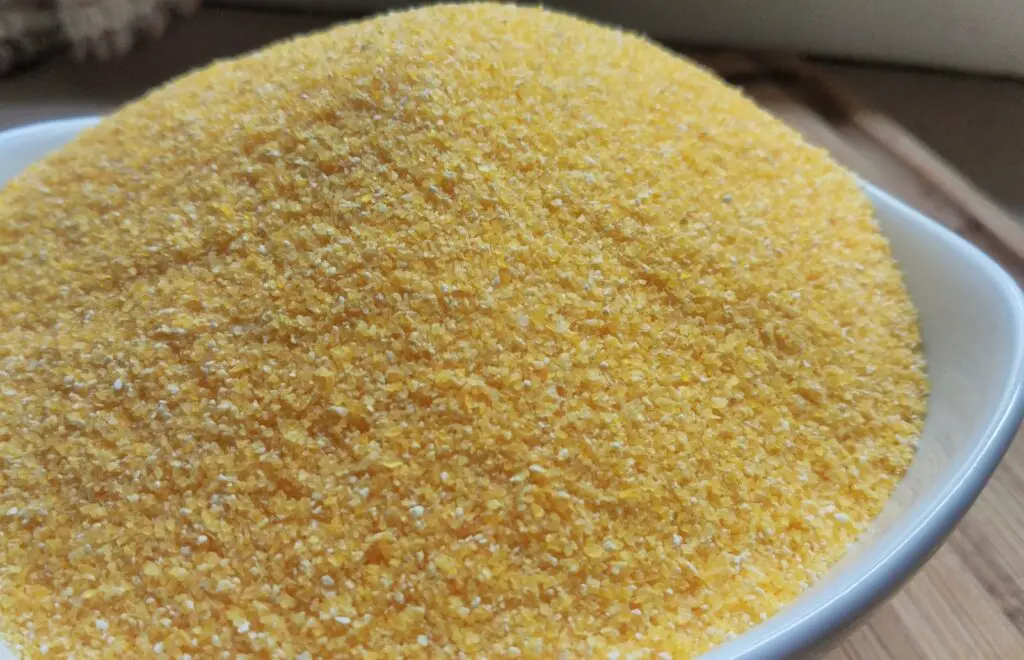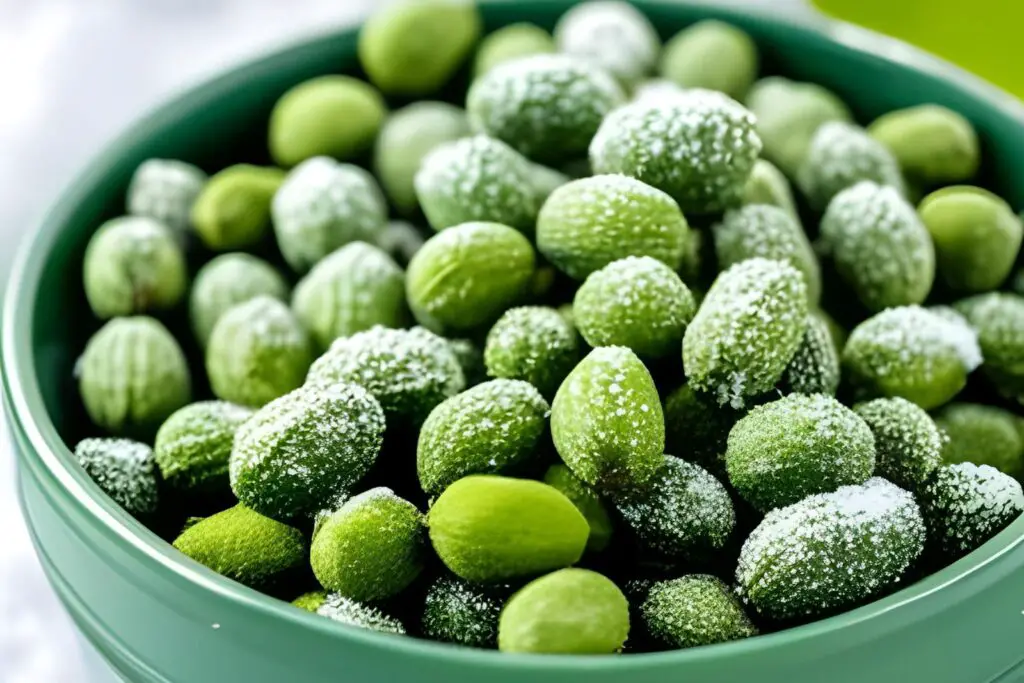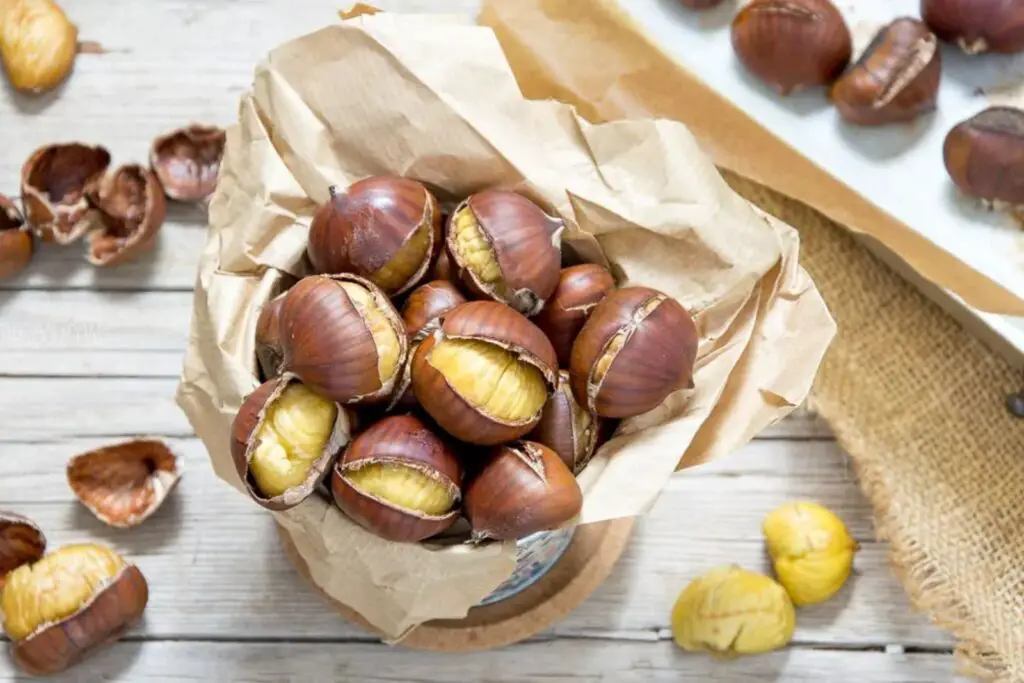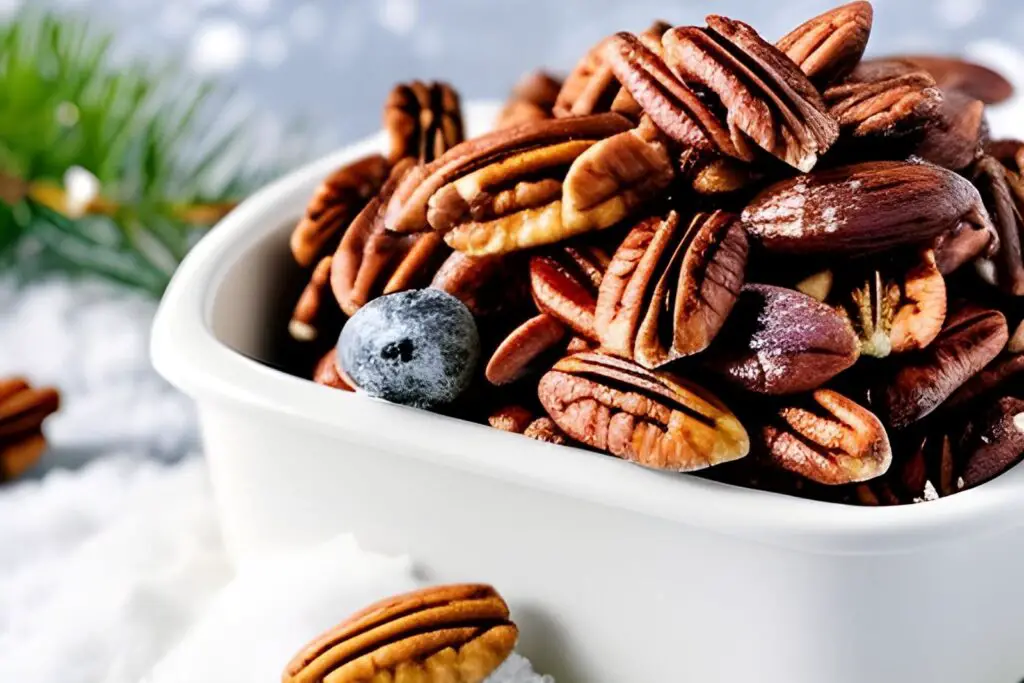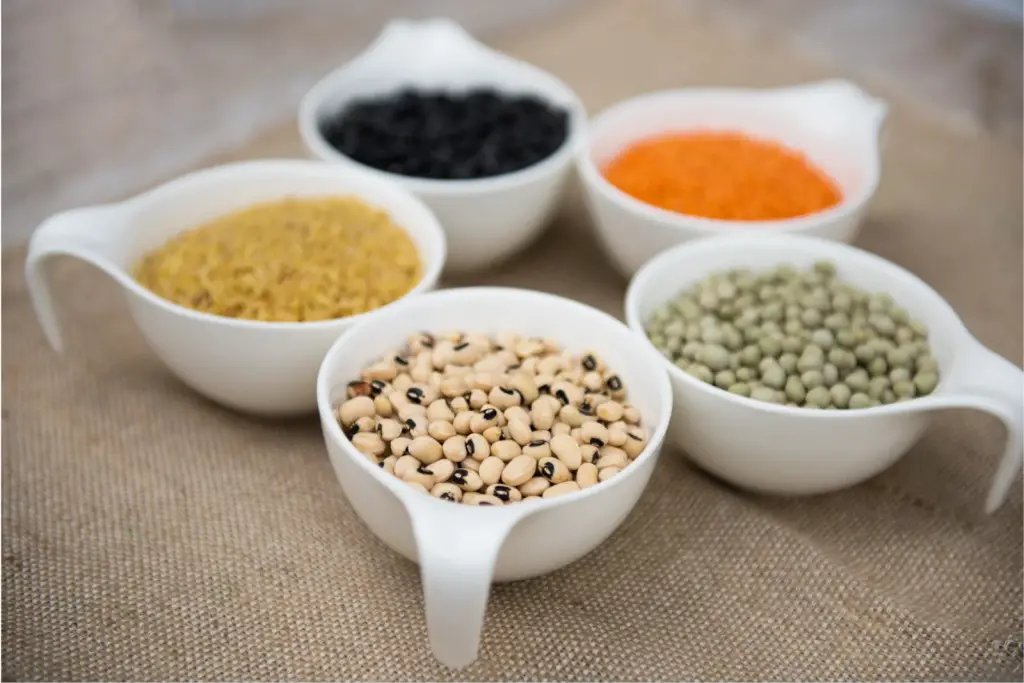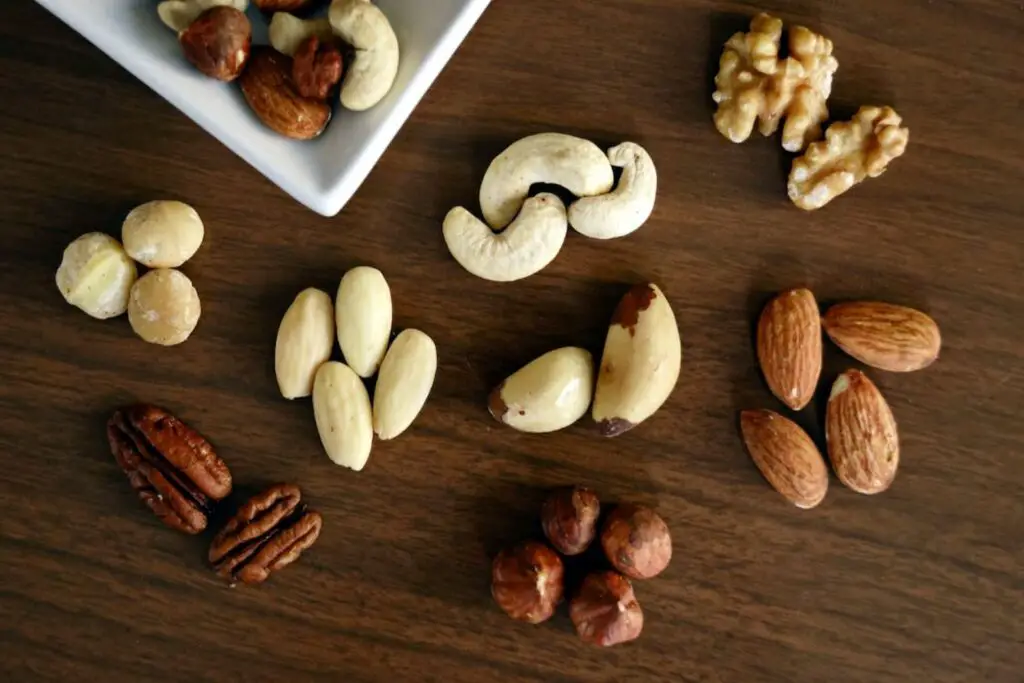
Hominy is a versatile ingredient made from dried corn kernels that have been treated with an alkali solution. It is commonly used in various cuisines, particularly in dishes like pozole and grits. Freezing hominy is an excellent way to extend its shelf life and have it readily available for future use. Whether you’ve cooked a large batch or want to stock up on this flavorful ingredient, freezing hominy can help maintain its taste and texture. This article presents a step-by-step guide on how to freeze hominy effectively, ensuring its quality and freshness when you’re ready to use it.
Here’s a comprehensive guide on freezing hominy:
Step 1: Select fresh or cooked hominy
When freezing hominy, it’s essential to begin with either fresh or cooked hominy, depending on your preference and availability. Here’s why:
- Fresh hominy: If you opt for fresh hominy, it’s crucial to choose high-quality kernels that are in good condition and show no signs of spoilage. Look for hominy that has a vibrant color and a firm texture. Avoid any kernels that appear discolored, mushy, or have an off-putting odor, as these are indications of potential spoilage. Selecting fresh hominy ensures that you start with a base ingredient that is at its best, guaranteeing a better final product when you’re ready to use it after freezing.
- Cooked hominy: On the other hand, if you already have cooked hominy that you’d like to freeze, allow it to cool completely before proceeding with the freezing process. Cooling the cooked hominy helps prevent condensation and ice crystals from forming during the freezing process, which can negatively impact its texture and quality. Once the cooked hominy has cooled down, it’s ready to be portioned and transferred to freezer-safe containers or bags.
Whether you choose fresh or cooked hominy, ensuring its freshness and quality at the start of the freezing process is essential. This step sets the foundation for maintaining the best possible taste and texture when you thaw and use the hominy in your future culinary endeavors.
Should I freeze hominy in its cooking liquid?
It is generally recommended to freeze hominy without its cooking liquid. Freezing hominy in its cooking liquid can result in a change in texture and quality when thawed. The cooking liquid may become watery or separated upon thawing, affecting the overall taste and texture of the hominy. It is best to drain the cooked hominy well and freeze it in airtight containers or freezer bags for optimal results.
Step 2: Prepare the hominy for freezing
Regardless of whether you’re working with fresh or cooked hominy, preparing it correctly before freezing is essential. Here’s why:
- Fresh hominy: If you have fresh hominy, it’s important to rinse it thoroughly before freezing. This step helps remove any dirt, debris, or residues that may be present on the kernels. By rinsing fresh hominy, you ensure that any impurities are eliminated, resulting in a cleaner and more hygienic final product. This step also helps remove any excess starch that may be clinging to the hominy, which can improve its texture after freezing.
- Cooked hominy: When dealing with cooked hominy, it’s necessary to strain it to separate the kernels from any remaining liquid or cooking broth. This separation is important because freezing hominy with excess liquid can lead to the formation of ice crystals and affect its texture when thawed. By straining the cooked hominy, you remove any excess moisture, allowing the kernels to freeze individually and maintain their integrity during the freezing process.
Preparing the hominy for freezing ensures that it remains in its best possible state and minimizes the risk of texture or quality issues. Whether it’s rinsing fresh hominy to remove impurities or straining cooked hominy to separate it from excess liquid, these steps contribute to preserving the taste, texture, and overall quality of the hominy when you’re ready to use it later on.
Can I freeze hominy without blanching it first?
Yes, you can freeze hominy without blanching it first. Blanching is a process of briefly boiling or steaming food before freezing to preserve its color, texture, and nutrients. However, in the case of hominy, blanching is not necessary as it is already processed through nixtamalization, which involves soaking and cooking the dried corn kernels in an alkaline solution. The nixtamalization process itself helps preserve the hominy and prepare it for freezing, eliminating the need for additional blanching.
Step 3: Portion the hominy
When freezing hominy, it’s important to consider portioning it into sizes that are convenient for your future recipes. Here’s why:
- Convenience and flexibility: By portioning the hominy before freezing, you gain convenience and flexibility in your cooking. Smaller portion sizes allow you to thaw and use only the amount you need for a particular recipe, without having to defrost the entire batch. This way, you can minimize food waste and have better control over the quantities you incorporate into your dishes. Whether you’re preparing a large family meal or a single serving, having pre-portioned hominy makes it easier to tailor your recipes to your specific needs.
- Uniform freezing and thawing: Portioning the hominy into consistent sizes helps ensure uniform freezing and thawing. When you freeze hominy in smaller portions, it allows for quicker and more even freezing throughout each individual piece. This helps maintain the hominy’s texture and quality. Additionally, when it comes time to thaw the hominy, smaller portions will thaw more rapidly and evenly compared to larger quantities, enabling you to use them promptly in your cooking.
- Customization: Portioning the hominy allows for customization based on your preferred serving sizes or recipe requirements. You can divide the hominy into smaller portions if you frequently use it as an ingredient in various dishes or larger portions if you prefer to use it as a standalone side dish. Having the hominy pre-portioned according to your preferences allows for efficient meal planning and makes it easier to incorporate it into your cooking whenever needed.
Step 4: Transfer hominy to freezer-safe containers
Once you have portioned the hominy, the next step is to transfer it into appropriate freezer-safe containers or resealable plastic bags. Here’s why this step is crucial:
- Protection from freezer burn: Freezer-safe containers or resealable plastic bags provide a protective barrier against freezer burn. Freezer burn occurs when the food comes into contact with air, leading to the dehydration of the surface and the formation of icy crystals. By using proper containers, you minimize the risk of freezer burn, ensuring that the hominy retains its quality and taste over time.
- Expansion during freezing: When hominy freezes, water molecules inside it expand, causing the volume to increase. It is essential to leave some headspace in the containers to accommodate this expansion. Failing to leave enough room may result in the containers bursting or leaking. By allowing sufficient headspace, you ensure that the hominy freezes uniformly and that the containers remain intact.
- Air removal: It is crucial to squeeze out as much air as possible from the containers or bags before sealing them. Air contains moisture that can contribute to the formation of ice crystals and freezer burn. Removing the air helps maintain the hominy’s texture and flavor during freezing. You can use methods like gently pressing the containers or using vacuum-sealed bags to eliminate as much air as possible.
Step 5: Label and date the containers
Labeling and dating the containers that hold the frozen hominy is an important step in maintaining an organized freezer and tracking the storage time of the hominy. Here’s why this step is essential:
- Identification: By labeling each container with the contents, you can easily identify the frozen hominy without the need for defrosting or opening multiple containers. This saves time and prevents potential confusion when you’re looking for a specific ingredient in your freezer. Clear identification ensures that you can quickly locate the hominy when you need it for a recipe.
- Storage time tracking: Dating the containers allows you to keep track of the storage time of the hominy. It’s important to know how long the hominy has been frozen, as it helps you prioritize the use of older batches and maintain the best quality possible. Freezing does not halt the deterioration process indefinitely, so it’s recommended to use the hominy within a certain timeframe for optimal taste and texture. By having the date of freezing clearly marked, you can make informed decisions about which portions to use first and manage your inventory effectively.
- Prevention of food waste: Labeling and dating the containers also assist in preventing food waste. With clear information about the storage time, you can easily identify hominy that has been in the freezer for too long and may no longer be suitable for consumption. This helps you avoid using expired or low-quality hominy, ensuring that you prioritize using the freshest batches first and minimize waste.
- Organization and efficiency: An organized freezer contributes to overall kitchen efficiency. By labeling and dating the hominy containers, you create a system that allows you to locate ingredients easily and plan your meals accordingly. It saves you time and effort in the long run, as you can quickly assess your available frozen ingredients and make informed choices when meal prepping or cooking.
Step 6: Store in the freezer
After properly sealing the containers holding the hominy, it’s crucial to store them correctly in the freezer. Here’s why this step is important:
- Preservation of quality: Placing the sealed containers in the coldest part of the freezer helps maintain the hominy’s quality over time. The coldest areas, such as the back or bottom shelf, typically have a more stable temperature, which minimizes temperature fluctuations and promotes even freezing. Consistent freezing conditions contribute to preserving the texture, flavor, and nutritional value of the hominy.
- Temperature control: It’s essential to set the freezer temperature to 0°F (-18°C) or below. This low temperature is necessary to keep the hominy frozen solid and prevent any potential spoilage or bacterial growth. Freezing at 0°F (-18°C) or below ensures that the hominy remains safe to consume and retains its quality for an extended period.
- Protection against freezer burn: Storing the hominy in the coldest part of the freezer also helps protect it from freezer burn. The lower temperature reduces the risk of air exposure and moisture loss, which can lead to freezer burn and negatively affect the hominy’s taste and texture. Proper storage conditions in a well-maintained freezer help maintain the hominy’s freshness and prevent unwanted freezer burn.
- Organization and accessibility: By placing the sealed containers in a designated area in the freezer, such as the back or bottom shelf, you establish an organized storage system. This makes it easier to locate the hominy when needed, reducing the time and effort spent searching through the freezer. Organized storage enhances efficiency in meal planning and preparation.
How long can frozen hominy be stored?
Frozen hominy can be stored for an extended period of time if properly frozen and stored. When kept at a constant temperature of 0°F (-18°C) or below, frozen hominy can maintain its quality for up to 6 to 12 months. However, for the best taste and texture, it is recommended to consume the frozen hominy within the first 3 to 4 months of freezing. Always ensure that the hominy is stored in airtight containers or freezer bags to prevent freezer burn and maintain its freshness.
Other related questions
How do I properly defrost hominy?
To properly defrost hominy, there are a few methods you can use. The easiest and safest way is to transfer the frozen hominy from the freezer to the refrigerator and allow it to thaw overnight. If you need to defrost it quickly, you can place the frozen hominy in a sealed plastic bag and submerge it in cold water, changing the water every 30 minutes until thawed. Alternatively, you can use the defrost function on your microwave, but be cautious to avoid overcooking or unevenly thawing the hominy. Once thawed, the hominy is ready to be used in your preferred recipe.
Can I refreeze previously thawed hominy?
It is generally not recommended to refreeze previously thawed hominy. Freezing and thawing can affect the texture and quality of the hominy, and multiple freeze-thaw cycles can further degrade its taste and texture. Refreezing can also increase the risk of bacterial growth and foodborne illnesses. Therefore, it is best to plan your portions accordingly and only thaw the amount of hominy you intend to use to minimize the need for refreezing.
How do I know if my frozen hominy has gone bad?
To determine if frozen hominy has gone bad, you should rely on your senses of sight, smell, and taste. If the hominy appears discolored, has ice crystals, or has developed a slimy texture, it may indicate spoilage. A foul or off-putting odor is also a sign of potential spoilage. Additionally, if you taste the hominy and it has an unusual or unpleasant flavor, it is best to discard it. When in doubt, trust your instincts and prioritize food safety by erring on the side of caution.
Can I use frozen hominy with the fresh ones?
Yes, you can use frozen hominy with fresh ones in certain recipes. However, it’s important to note that frozen hominy may have a slightly different texture compared to fresh hominy. When combining them in a recipe, the frozen hominy may need slightly longer cooking time to ensure it reaches the desired tenderness. It’s recommended to thaw the frozen hominy before using it in a dish, as this will help it integrate better with the fresh hominy during cooking.
Does freezing hominy affect its texture?
Freezing hominy can slightly affect its texture. The freezing process can cause the texture of hominy to become slightly softer or more tender compared to its fresh counterpart. However, the impact on texture is generally minimal, and many people find the difference to be negligible. Proper packaging and storage techniques, such as using airtight containers or freezer bags, can help minimize any potential texture changes.
Can frozen hominy be used in recipes without thawing?
Frozen hominy can be used in recipes without thawing, depending on the specific dish. For recipes that involve longer cooking times, such as stews, soups, or slow cooker recipes, frozen hominy can be added directly to the dish without prior thawing. The heat from the cooking process will gradually thaw and cook the hominy. However, for recipes that require a shorter cooking time or delicate texture, it is generally recommended to thaw the hominy first for more even cooking and better integration into the dish.
Can I freeze hominy that has been mixed with other ingredients?
Yes, you can freeze hominy that has been mixed with other ingredients. However, it’s important to consider the nature of the other ingredients. If the other ingredients freeze well and can withstand the freezing and thawing process without compromising their quality, then the mixed hominy can be safely frozen. It’s recommended to package the mixture in airtight containers or freezer bags and label them appropriately for easy identification and thawing.

